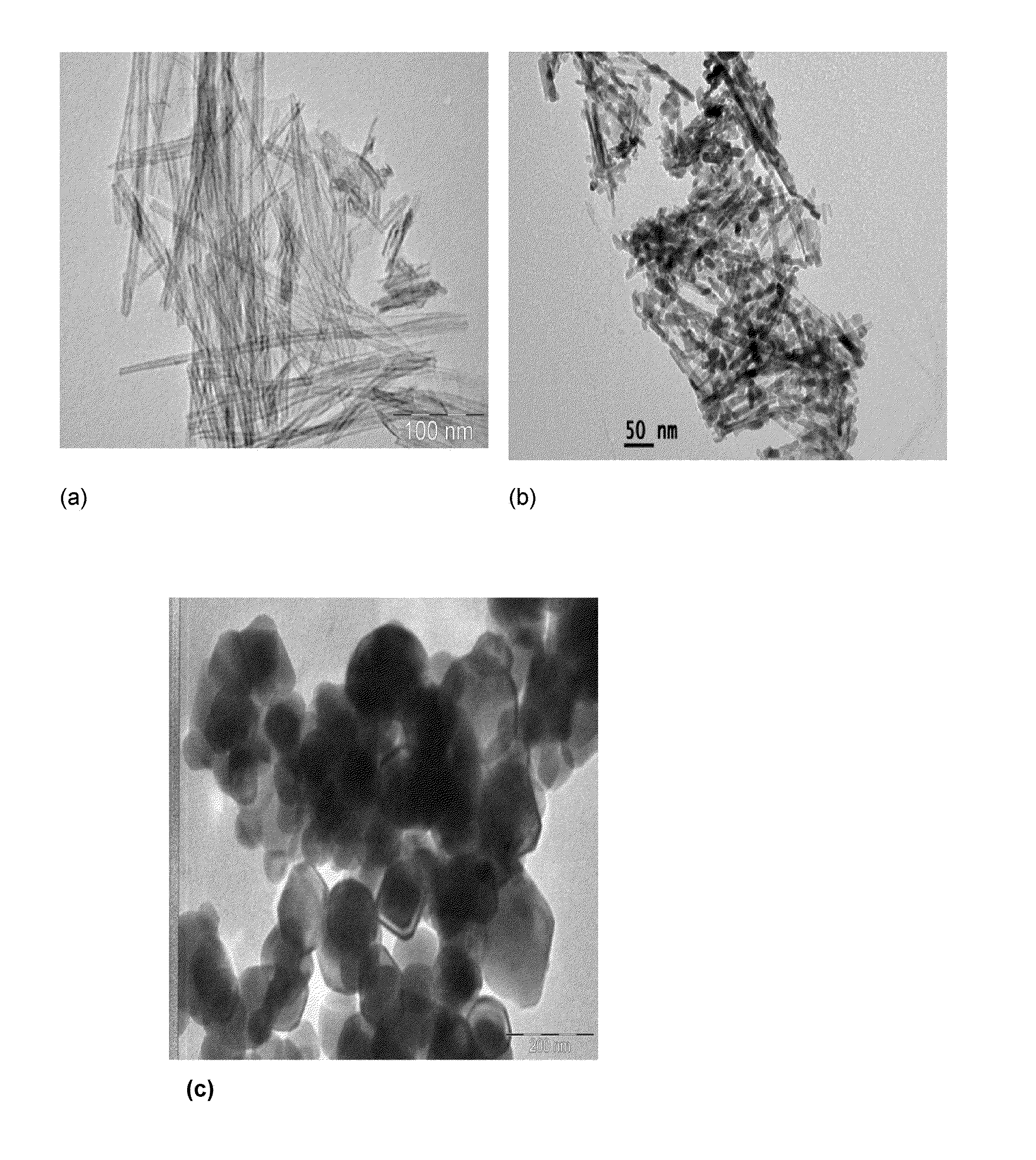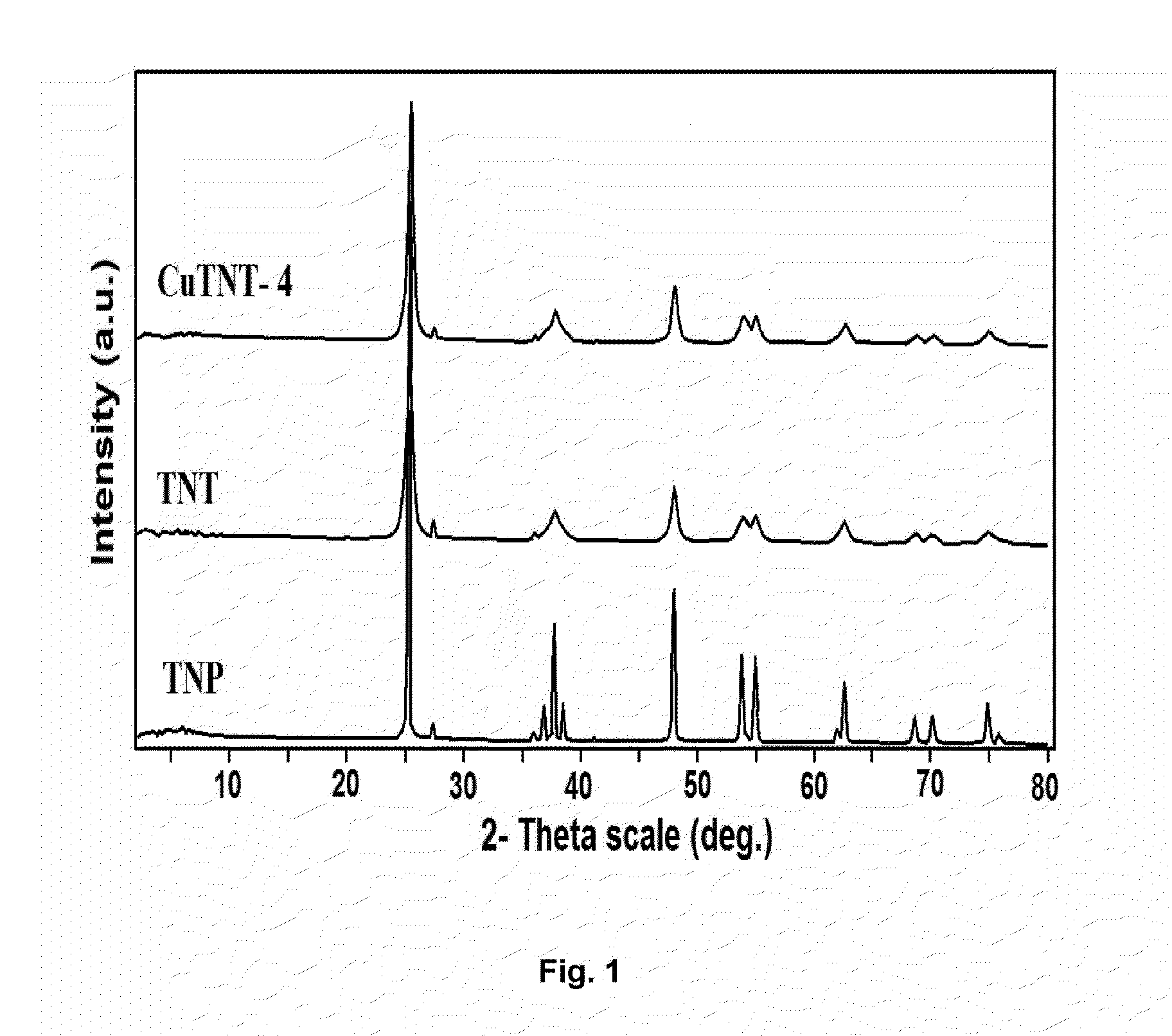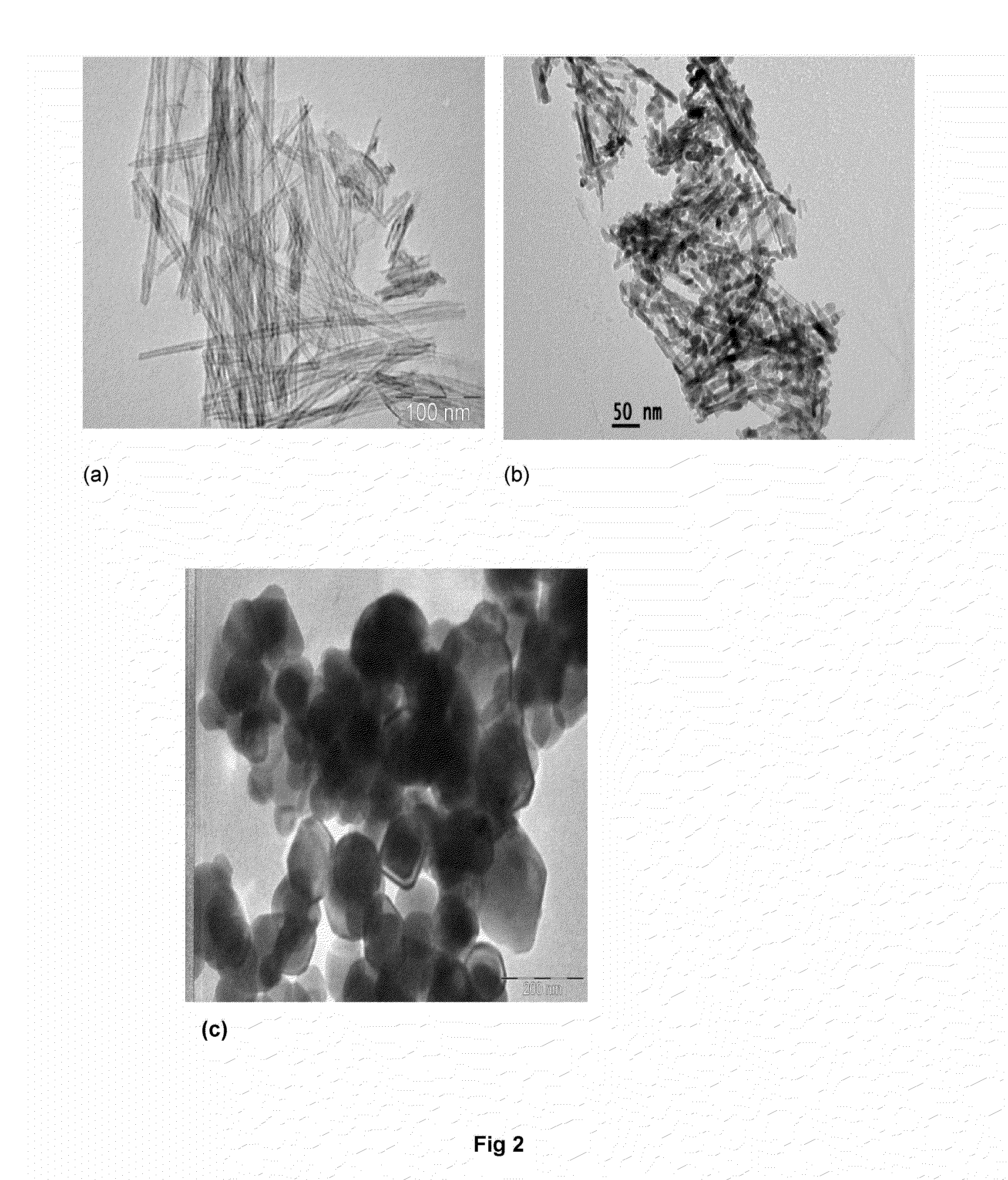CuO - TiO2 NANOCOMPOSITE PHOTOCATALYST FOR HYDROGEN PRODUCTION, PROCESS FOR THE PREPARATION THEREOF
a technology of tio2 nanocomposites and photocatalysts, which is applied in the direction of catalyst activation/preparation, physical/chemical process catalysts, metal/metal-oxide/metal-hydroxide catalysts, etc., can solve the problems of non-renewable resources in nature and potential to damage the environment, commercial utilization damage to the environment, and non-renewable catalyst excitation sources
- Summary
- Abstract
- Description
- Claims
- Application Information
AI Technical Summary
Benefits of technology
Problems solved by technology
Method used
Image
Examples
examples
[0049]Following are the examples given to further illustrate the invention and should not be construed to limit the scope of the present invention.
example-1
Synthesizing TiO2 Nano Tube (TNT)
[0050]In a typical synthesis process, TiO2 (Merck) 0.1 μm average sized particles (TMP) (2.5 g,) was dispersed into 10 M NaOH (200 mL) aqueous solution under magnetic stirring for 1 h at 32±2° C. The homogeneous suspension was transferred into 250 mL teflon-lined autoclave and fitted with nuts and bolts. Then, the autoclave was kept in hot air oven at 130° C. for 20 h. The autoclave was removed from the oven and cooled-down to room temperature under tap water flow. At room temperature the autoclave was opened, discarded supernatant solution from white precipitate. Thus obtained white precipitate was subjected to washing in 3 steps under magnetic stirring for 2 hours and each step repeated twice: the precipitate was washed in distilled water, followed by 0.1 M HCl and absolute ethanol. Further, washed precipitate was subjected to drying in oven at 80° C. for 12 h and calcined at 350° C. for 5 h @ 2° C. / min.
[0051]The X-ray diffraction (XRD) patterns (F...
example-2
Preparation of CuO Dispersed TiO2 NT
[0052]Wet impregnation method of preparation was used for CuO dispersion on TiO2 NT (CuTNT-4). For each Cu modified sample, required amount of TiO2 nanotube (0.5 g) was dispersed into Cu(NO3)2.3H2O (0.028 g, 1.5 wt %, 10 mL water) concentration aqueous solution for 1 h at 110±2° C. Excess water was evaporated to dryness with slow heating and constant magnetic stirring. The sample was dried at 110° C. for at least 12 h and calcined at 350° C. for 5 h.
[0053]The X-ray diffraction (XRD) patterns (FIG. 1) of Cu-modified TiO2 nanotube catalysts were recorded with Siemens D-5000 X-ray diffract meter using Cu Kα radiation. A Philips Technai G2 FEI F12 transmission electron microscope operating at 80-100 kV was used to record the transmission electron microscopy (TEM) patterns (FIG. 2). The Diffuse Reflectance UV-Visible spectra (FIG. 3) were recorded on a GBC UV-visible Cintra 10e spectrometer, in the wavelength 200-800 nm range. X-ray photoelectron spect...
PUM
| Property | Measurement | Unit |
|---|---|---|
| Temperature | aaaaa | aaaaa |
| Time | aaaaa | aaaaa |
| Time | aaaaa | aaaaa |
Abstract
Description
Claims
Application Information
 Login to View More
Login to View More - R&D
- Intellectual Property
- Life Sciences
- Materials
- Tech Scout
- Unparalleled Data Quality
- Higher Quality Content
- 60% Fewer Hallucinations
Browse by: Latest US Patents, China's latest patents, Technical Efficacy Thesaurus, Application Domain, Technology Topic, Popular Technical Reports.
© 2025 PatSnap. All rights reserved.Legal|Privacy policy|Modern Slavery Act Transparency Statement|Sitemap|About US| Contact US: help@patsnap.com



